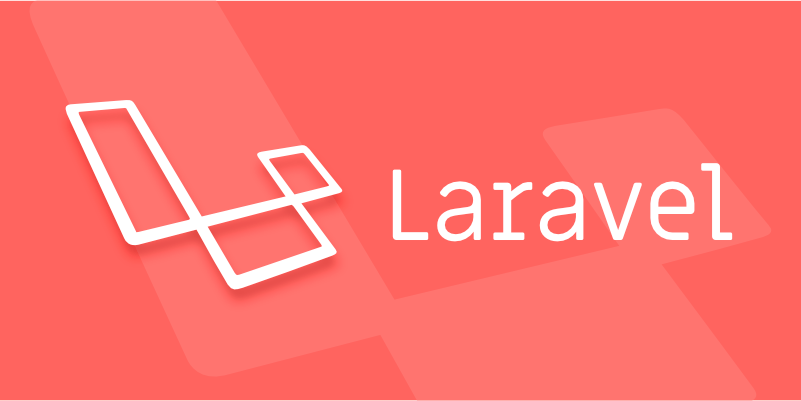Implementing Robust Authorization Logic Using Laravel Gates and Policies
Jul 07, 2025 am 01:40 AMLaravel's authorization logic can be implemented through Gates and Policies; 1. Gates are used for model-independent operations, such as checking whether the user can view the dashboard, define it through Gate::define and verify it with Gate::allows; 2. Policies are used for model-based operations, such as updating permissions to articles, and create corresponding policy classes and register with AuthServiceProvider; 3. Complex logic can be processed in combination with Gates and Policies, such as calling defined Gate rules in the policy; 4. The keys to keep the authorization logic neat include: policy methods focus on single checks, Gates are used for high-level permissions, avoiding mixing business logic, writing tests, and using clear naming.

Laravel provides a powerful and flexible way to manage authorization logic using Gates and Policies , which are essential for controlling what users can do in your application. If you're building an app with different user roles or complex access rules, understanding how to use these tools effectively is key.

Let's break down how to implement solid authorization logic using Laravel Gates and Policies.

What Are Gates and When to Use Them
Gates in Laravel are closings that determine whether a user is allowed to perform a specific action. They're best used for actions that aren't tied directly to a model — like checking if a user can view a dashboard or send a global message.
For example:

Gate::define('view-dashboard', function ($user) {
return $user->isAdmin();
});Then in your controller or Blade views, you can check:
if (Gate::allows('view-dashboard')) {
// Show dashboard
}Use Gates when:
- The action doesn't involve a specific model.
- You need simple, reusable checks across the app.
- You want to define logic outside of policies for clarity.
How to Use Policies for Model-Based Authorization
When your authorization logic revolutions around models (like posts, comments, or users), Policies are the right choice. Each policy corresponds to a model and contains methods for actions like view , create , update , and delete .
To create a policy:
php artisan make:policy PostPolicy --model=Post
Then register it in AuthServiceProvider :
protected $policies = [
Post::class => PostPolicy::class,
];Inside your policy class, define methods like this:
public function update(User $user, Post $post)
{
return $user->id === $post->user_id;
}In your controller, you can now use:
$this->authorize('update', $post);
This approach keeps your model-related permissions clean and organized.
Combining Gates and Policies for Complex Logic
Sometimes, your authorization needs span both model-specific and general rules. That's where combining Gates and Policies shines.
For instance, you might have a gate that checks if a user has a certain role, and then call that gate inside a policy:
Gate::define('manage-settings', function ($user) {
return $user->hasPermission('manage_settings');
});
// In a policy
public function editSettings(User $user)
{
return Gate::allows('manage-settings');
}Or, you might conditionally allow access based on multiple criteria:
public function delete(User $user, Post $post)
{
return $user->id === $post->user_id || $user->isAdmin();
}Using Gates and Policies together give you fine-grained control without repeating code or cluttering your controllers.
Tips for Keeping Your Authorization Clean and Maintainable
Here are some practical tips to keep things manageable as your app grows:
- Keep your policy methods small and focused — each should handle one logical check.
- Use Gates for high-level permissions like "can-access-admin-panel".
- Don't mix business logic into your policies — keep them about authorization only.
- Consider writing tests for your gates and policies to ensure they behave as expected.
- Use describe names so it's easy to understand what each gate or method does later.
Also, remember that Laravel automatically resolves policy methods via method injection, so type-hinting models make things cleaner and easier to read.
That's the core of implementing strong authorization in Laravel using Gates and Policies. It's not overly complicated, but organizing it well makes a big difference in the long run.
The above is the detailed content of Implementing Robust Authorization Logic Using Laravel Gates and Policies. For more information, please follow other related articles on the PHP Chinese website!

Hot AI Tools

Undress AI Tool
Undress images for free

Undresser.AI Undress
AI-powered app for creating realistic nude photos

AI Clothes Remover
Online AI tool for removing clothes from photos.

Clothoff.io
AI clothes remover

Video Face Swap
Swap faces in any video effortlessly with our completely free AI face swap tool!

Hot Article

Hot Tools

Notepad++7.3.1
Easy-to-use and free code editor

SublimeText3 Chinese version
Chinese version, very easy to use

Zend Studio 13.0.1
Powerful PHP integrated development environment

Dreamweaver CS6
Visual web development tools

SublimeText3 Mac version
God-level code editing software (SublimeText3)
 Working with pivot tables in Laravel Many-to-Many relationships
Jul 07, 2025 am 01:06 AM
Working with pivot tables in Laravel Many-to-Many relationships
Jul 07, 2025 am 01:06 AM
ToworkeffectivelywithpivottablesinLaravel,firstaccesspivotdatausingwithPivot()orwithTimestamps(),thenupdateentrieswithupdateExistingPivot(),managerelationshipsviadetach()andsync(),andusecustompivotmodelswhenneeded.1.UsewithPivot()toincludespecificcol
 Sending different types of notifications with Laravel
Jul 06, 2025 am 12:52 AM
Sending different types of notifications with Laravel
Jul 06, 2025 am 12:52 AM
Laravelprovidesacleanandflexiblewaytosendnotificationsviamultiplechannelslikeemail,SMS,in-appalerts,andpushnotifications.Youdefinenotificationchannelsinthevia()methodofanotificationclass,andimplementspecificmethodsliketoMail(),toDatabase(),ortoVonage
 Understanding Dependency Injection in Laravel?
Jul 05, 2025 am 02:01 AM
Understanding Dependency Injection in Laravel?
Jul 05, 2025 am 02:01 AM
Dependency injection automatically handles class dependencies through service containers in Laravel without manual new objects. Its core is constructor injection and method injection, such as automatically passing in the Request instance in the controller. Laravel parses dependencies through type prompts and recursively creates the required objects. The binding interface and implementation can be used by the service provider to use the bind method, or singleton to bind a singleton. When using it, you need to ensure type prompts, avoid constructor complications, use context bindings with caution, and understand automatic parsing rules. Mastering these can improve code flexibility and maintenance.
 Strategies for optimizing Laravel application performance
Jul 09, 2025 am 03:00 AM
Strategies for optimizing Laravel application performance
Jul 09, 2025 am 03:00 AM
Laravel performance optimization can improve application efficiency through four core directions. 1. Use the cache mechanism to reduce duplicate queries, store infrequently changing data through Cache::remember() and other methods to reduce database access frequency; 2. Optimize database from the model to query statements, avoid N 1 queries, specifying field queries, adding indexes, paging processing and reading and writing separation, and reduce bottlenecks; 3. Use time-consuming operations such as email sending and file exporting to queue asynchronous processing, use Supervisor to manage workers and set up retry mechanisms; 4. Use middleware and service providers reasonably to avoid complex logic and unnecessary initialization code, and delay loading of services to improve startup efficiency.
 Managing database state for testing in Laravel
Jul 13, 2025 am 03:08 AM
Managing database state for testing in Laravel
Jul 13, 2025 am 03:08 AM
Methods to manage database state in Laravel tests include using RefreshDatabase, selective seeding of data, careful use of transactions, and manual cleaning if necessary. 1. Use RefreshDatabasetrait to automatically migrate the database structure to ensure that each test is based on a clean database; 2. Use specific seeds to fill the necessary data and generate dynamic data in combination with the model factory; 3. Use DatabaseTransactionstrait to roll back the test changes, but pay attention to its limitations; 4. Manually truncate the table or reseed the database when it cannot be automatically cleaned. These methods are flexibly selected according to the type of test and environment to ensure the reliability and efficiency of the test.
 Choosing between Laravel Sanctum and Passport for API authentication
Jul 14, 2025 am 02:35 AM
Choosing between Laravel Sanctum and Passport for API authentication
Jul 14, 2025 am 02:35 AM
LaravelSanctum is suitable for simple, lightweight API certifications such as SPA or mobile applications, while Passport is suitable for scenarios where full OAuth2 functionality is required. 1. Sanctum provides token-based authentication, suitable for first-party clients; 2. Passport supports complex processes such as authorization codes and client credentials, suitable for third-party developers to access; 3. Sanctum installation and configuration are simpler and maintenance costs are low; 4. Passport functions are comprehensive but configuration is complex, suitable for platforms that require fine permission control. When selecting, you should determine whether the OAuth2 feature is required based on the project requirements.
 Implementing Database Transactions in Laravel?
Jul 08, 2025 am 01:02 AM
Implementing Database Transactions in Laravel?
Jul 08, 2025 am 01:02 AM
Laravel simplifies database transaction processing with built-in support. 1. Use the DB::transaction() method to automatically commit or rollback operations to ensure data integrity; 2. Support nested transactions and implement them through savepoints, but it is usually recommended to use a single transaction wrapper to avoid complexity; 3. Provide manual control methods such as beginTransaction(), commit() and rollBack(), suitable for scenarios that require more flexible processing; 4. Best practices include keeping transactions short, only using them when necessary, testing failures, and recording rollback information. Rationally choosing transaction management methods can help improve application reliability and performance.
 Handling HTTP Requests and Responses in Laravel.
Jul 16, 2025 am 03:21 AM
Handling HTTP Requests and Responses in Laravel.
Jul 16, 2025 am 03:21 AM
The core of handling HTTP requests and responses in Laravel is to master the acquisition of request data, response return and file upload. 1. When receiving request data, you can inject the Request instance through type prompts and use input() or magic methods to obtain fields, and combine validate() or form request classes for verification; 2. Return response supports strings, views, JSON, responses with status codes and headers and redirect operations; 3. When processing file uploads, you need to use the file() method and store() to store files. Before uploading, you should verify the file type and size, and the storage path can be saved to the database.






